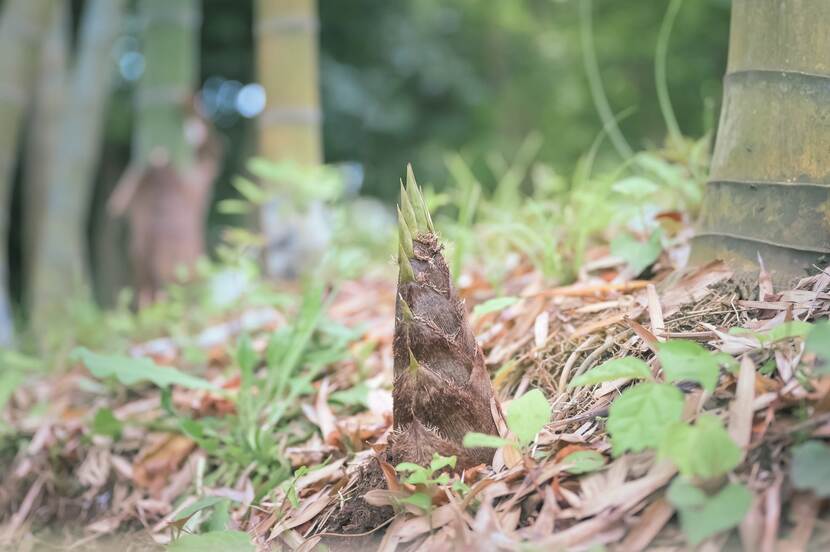Japan News Update #27 (25 April - 9 May, 2022)
Stay updated on the latest agricultural news in Japan, that we publish every two weeks.
by Yuki Sano
Initiatives to Reduce Environmental Impact
The Ministry of the Environment (MOE) has selected four areas in the Chugoku region, including Maniwa City in Okayama Prefecture, as "leading decarbonization regions", working to curb carbon dioxide emissions. The city plans to produce electricity from methane gas generated from food waste, and to electrify all public vehicles. In addition, MOE will grant up to 5 billion yen per project over five years to support energy conservation and the introduction of renewable energy. Twenty-six sites in Japan, including Yokohama City and Sado City in Niigata Prefecture, were selected to participate in the program. They aim to cover 100% of the power consumption of homes and office buildings with renewable energy by FY2030.
Source: Westernmost regions of Japan undergoing decarbonization
Nakatsu City in Oita prefecture, southern Japan, starts an experiment to convert unharvested crops due to the lack of successors into resources. It is a joint project with Ajinomoto, a Japanese food manufacturer. The students at Ritsumeikan Asia Pacific University will harvest and process bamboo shoots. They will be sold as a local specialty at local supermarkets to encourage students to think about food waste reduction and sustainable community development.
Source: Experiments to convert unharvested crops into resources

New Japanese food export platform
Japan launched a food trading platform in Bangkok to increase exports of Japanese farm products to Thailand and promote Japanese cuisine there. The establishment of the platform came as PM Kishida's government plans to increase annual food exports. Japan plans to set up food export initiatives in eight countries and territories, including the EU, by FY2023.
Source: Japan launches food export initiative with Thailand
Diversification of Japan’s agricultural production
There are initiatives to grow western vegetables as a local specialty. Producers and local agricultural cooperatives in Ehime prefecture, located on the island of Shikoku, have begun to produce trevis, the supply of which has not kept pace with domestic demand. A producer group in Tokyo also expanded the production of leek, fennel, and other vegetables to trevis this year. Prices of these imported western vegetables have been rising Belgian and Dutch leeks were priced at about 7,000 yen (50 euros) per 5 kg in mid-April, about 50% higher than the price in early March due to higher transportation costs. The freshness of domestic products compared to imports has been an advantage, but they are also becoming less expensive.
Source: Western vegetables expanding domestic production
HIS, a Japanese travel agency, moves into agriculture to diversify its revenue sources amid the pandemic, which badly hit the tourism sector. HIS Farmers, a subsidiary of HIS, was set up in April to produce and sell fresh fruits and vegetables. In addition, the company plans on branching out across the country to introduce tours at the farms. Huis Ten Bosch, a theme park operated by HIS in Nagasaki Prefecture, will be offering tours that allow visitors to experience agriculture.
Source: COVID-hit Japan travel agency looks for growth in agriculture
Onion price this season is three or even four times higher than usual. Hokkaido, the top production center, was hit by a severe drought last summer. In Saga Prefecture, the second-largest producer, there was too much rain last month. The Japanese onion industry has also been plagued by the COVID-19 lockdown of Shanghai, which has held up imports from China. This includes frozen onions that are indispensable to Japanese makers of processed foods. Domestic onions are in short supply and there is a strong demand for imports, with imports up 50% on the previous year. The Netherlands has suddenly become the second largest exporter of onions to Japan in February this year, while traders struggled to secure suppliers.Sources: VOX POPULI: Sky-high prices raise humble onion to place of greatness and
February Imported onions increased by 50%
Japan’s Language of Flowers
In Japan, flowers have been bestowed with their unique cultural definitions: Hana kotoba (flower symbolism). Hana kotoba is so widespread that it can be a valuable shorthand for conveying a message to another person. For example, the pink rose means giving thanks in Japan.
Source: Say it with a bouquet: Japan’s language of flowers

New technologies and Agricultural application
Nissin Foods, a Japanese food company, and Toyota have jointly initiated an agreement to promote human well-being through healthy eating. The plan envisions using Nissin’s innovative food to provide personalized "Complete Nutrition Meals" for Woven City. Woven City is a smart city, a "living laboratory" for self-driving vehicles, delivery robots, smart homes, and artificial intelligence, developed in Susono City, Shizuoka Prefecture, on behalf of Toyota.
Source: Nissin Foods, Toyota partner to realize well-being through food
NEC X, a subsidiary of Japanese information technology company NEC in California, has established Beagle Technology. This startup automatically cuts grapevines and buds. The startup aims to reduce the farmer's burden through DX (Digital transformation) in agriculture and to expand its business in California, which is famous for its wine production.
Source: NEC establishes new Agritech company in the US
ITO EN, a Japanese beverage company, has developed an AI-based tea quality estimation technology. This technology allows farmers to visualize the ingredients in the rough tea leaves by taking a picture with a smartphone and determining the quality of the tea leaves. It saves costs and time compared to dedicated analyzers, which are indispensable for judging tea leaf quality. As a result, the company aims to reduce the burden on farmers to secure quality tea and production areas and to lower the hurdle for newcomers.
Source: Itoen use AI to analyze the taste of tea